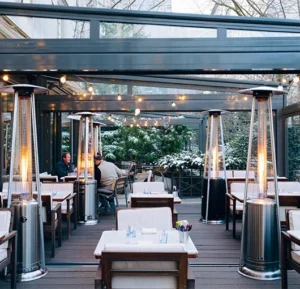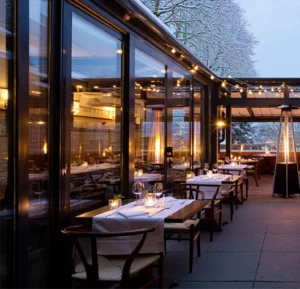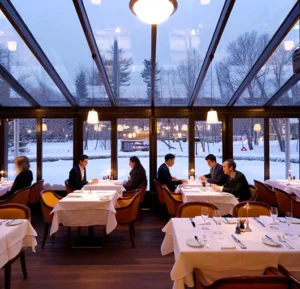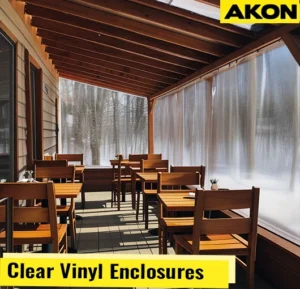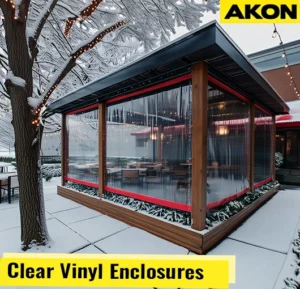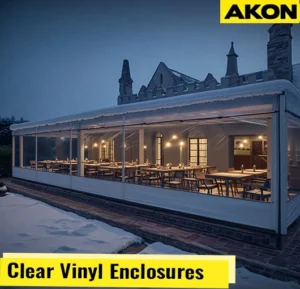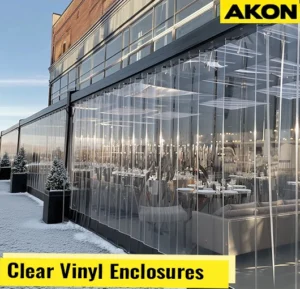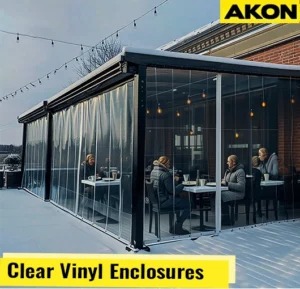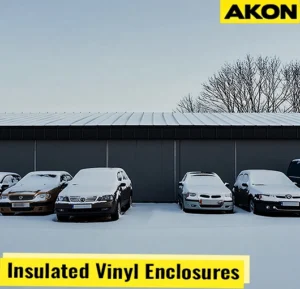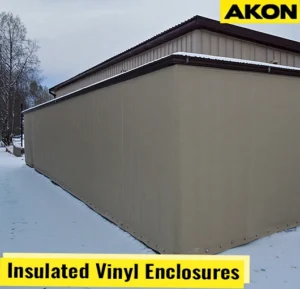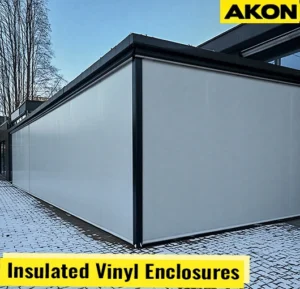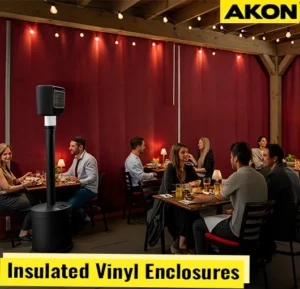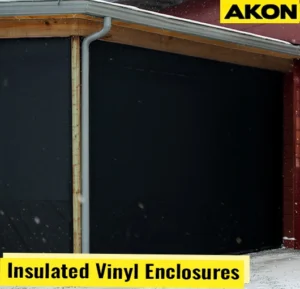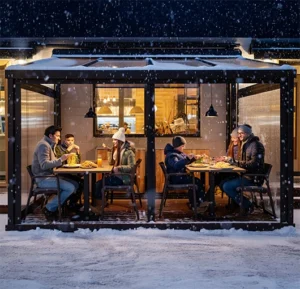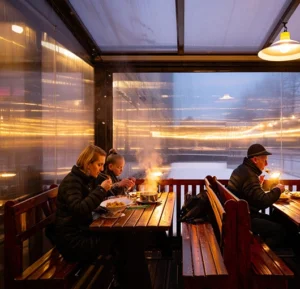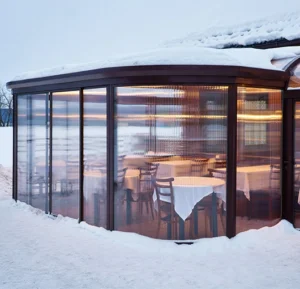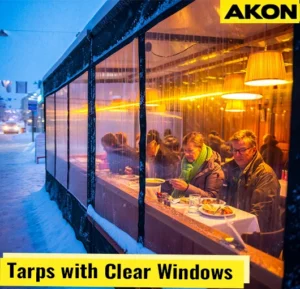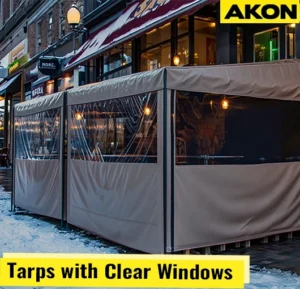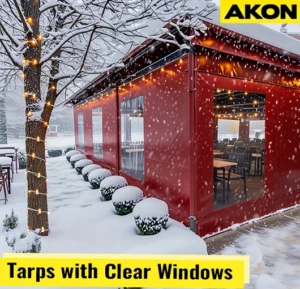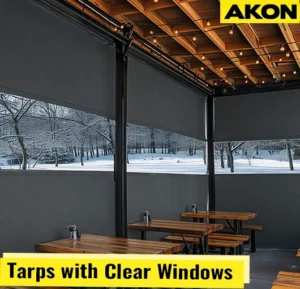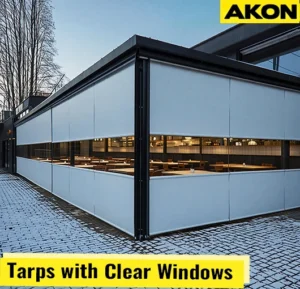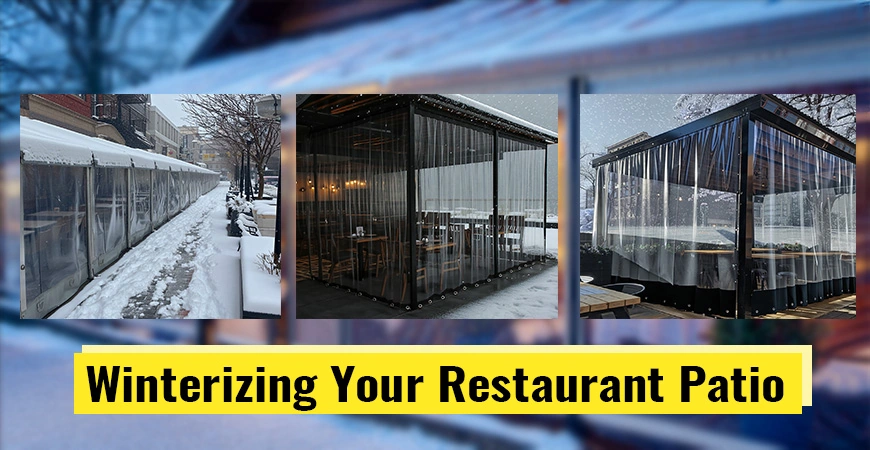
Overview
Most restaurants shutter their patios at the first sign of winter and leave them unused until spring returns. That's half a year of vacant revenue opportunity sitting outside. But successful restaurant operators are discovering something different: your outdoor seating doesn't need to close down when cold weather arrives.
Growing numbers of establishments are pushing their outdoor dining seasons further and seeing tangible financial benefits. The logic is straightforward. You've invested in the infrastructure, furniture, and outdoor ambiance. Why surrender 30-40% of your total capacity for six months annually? Whether you're after holiday dinner traffic, weekend brunch service during snowfall, or simply maintaining your regular customer base year-round, protected patio space addresses a genuine revenue challenge.
The Case for Year-Round Patio Dining
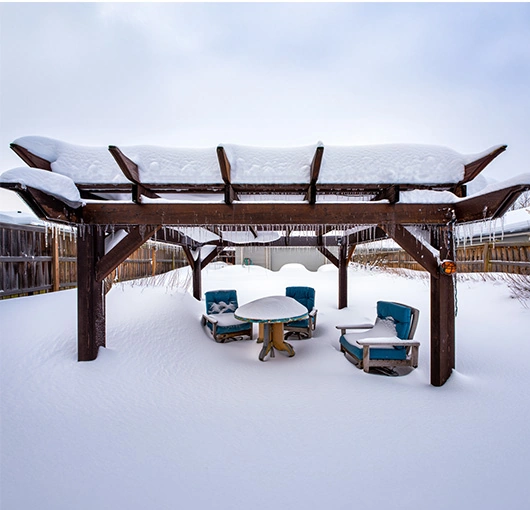
Let's look at what you actually gain from keeping your patio open through winter. Start with the money. If your patio makes up even 20% of your seating, every week it sits empty costs you thousands in lost sales. Those tables should be turning and generating revenue just like your indoor seats.
A protected patio also gives you something most of your competition doesn't offer. Customers actually want to dine outside in winter. There's something memorable about sitting outside while it's snowing, staying warm and comfortable under proper protection. That's the kind of experience people talk about and come back for. You can't buy that kind of word-of-mouth marketing.
Then there's the practical benefit. Weather beats up outdoor furniture and fixtures. Snow, ice, wind, and rain cause damage that adds up to expensive replacements. When you protect your patio properly, you're extending the life of everything out there. So you're making money and saving money at the same time.
Your Patio Enclosure Options
Permanent Glass Installations
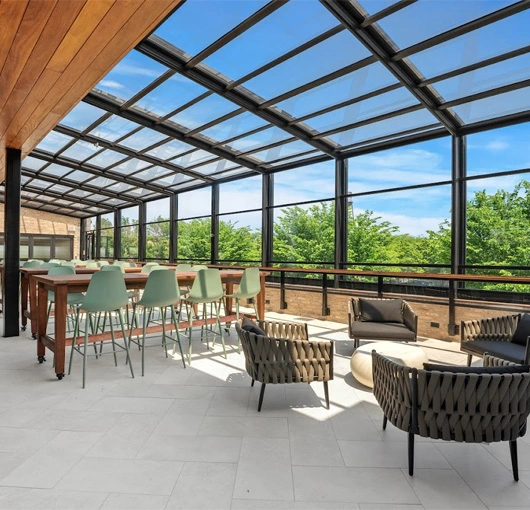
Glass panels set in aluminum frames turn your patio into a true year-round dining room. You get floor-to-ceiling views, excellent weather protection, and a high-end look that works well for upscale restaurants.
Expect to invest $10,000-$30,000 or more depending on how big your patio is and how it's configured. Glass creates a permanent structure that gives you solid protection season after season.
You'll need to keep the glass clean, and depending on where you're located, permits might be required. Individual panels can be replaced if one gets damaged. Just know that once it's up, it's permanent. This works best if you want year-round outdoor dining and don't need the option to fully open things up on nice days.
Flexible Clear Vinyl Systems
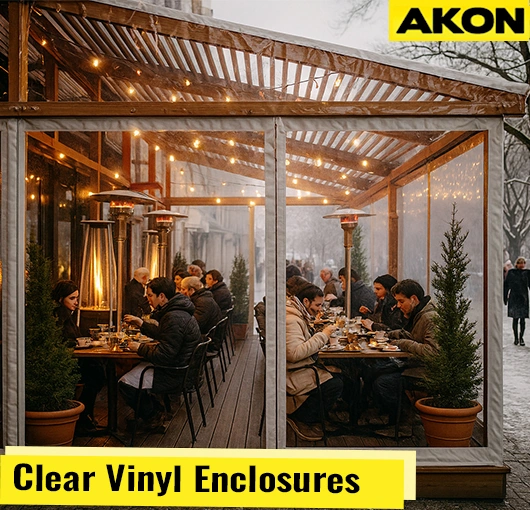
AKON's Heavy-duty clear vinyl curtains stop wind, rain, and snow while keeping visibility clear. Your diners can still see outside, which keeps that outdoor dining feeling alive even when it's freezing. Natural light comes through, so the space stays bright and welcoming.
The real advantage here is flexibility. Each panel works on its own, so you can control exactly how much protection you need. Got a mild afternoon in November? Roll up a few panels. Dealing with harsh wind from one direction? Close just that side and leave the rest open.
They're built with industrial grommets and reinforced edges that handle commercial use, which means they hold up when your staff needs to adjust them multiple times during a busy shift.
Insulated Vinyl Enclosures
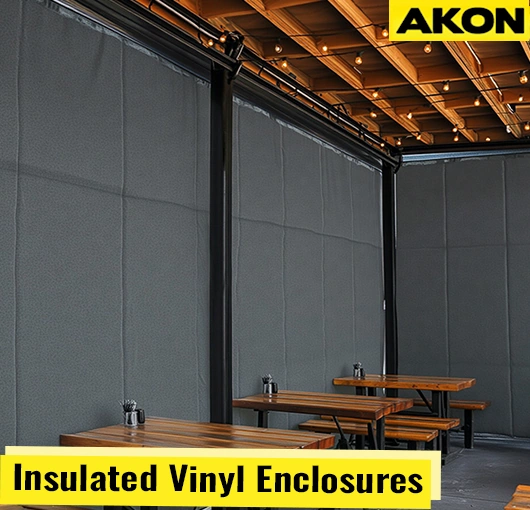
If you're planning to heat your patio through winter, AKON's Insulated Vinyl Enclosures are designed specifically for that. They have insulation built right into the vinyl layers, which means the heat from your patio heaters actually stays inside instead of escaping into the cold. This makes them essential if you want your heating to work efficiently.
The insulation does reduce visibility compared to clear vinyl, but AKON lets you add clear vision panels wherever you want them. You end up with a genuinely warm, comfortable space that customers actually want to sit in during winter. The trade-off in visibility is worth it. Plus, keeping heat in means your heating costs stay manageable instead of skyrocketing.
Polycarbonate Sheet Systems
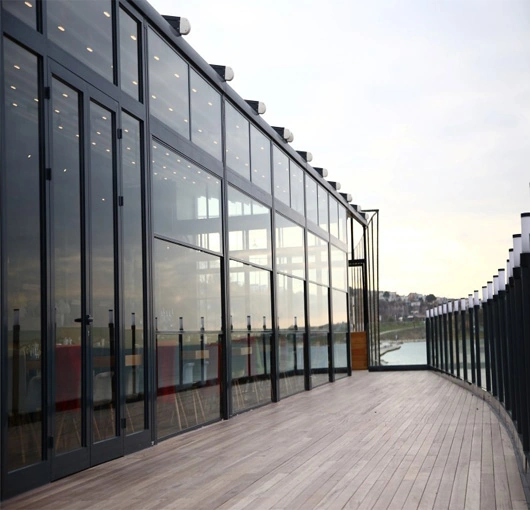
Polycarbonate panels offer a plastic alternative to glass with some real benefits. They're lighter, won't shatter on impact, cost less than glass, and can take a hit without breaking. You can get them clear or tinted to match your needs.
The main thing to watch for is scratching. Restaurant patios see a lot of activity, and polycarbonate picks up scratches over time that can cloud your view. These panels also expand and contract when temperatures change, so your frame needs to account for that movement. Like glass, once they're installed, they're staying put. If you're after a permanent setup that's tougher and cheaper than glass, polycarbonate makes sense.
Industrial-Grade Tarps with Visibility Panels
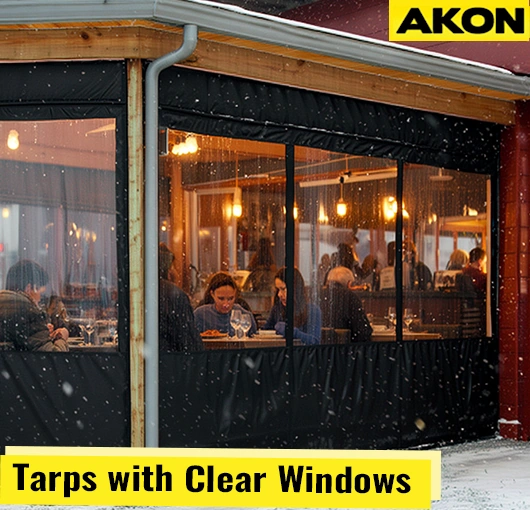
AKON's Tarps with Clear Windows are built tough for restaurants and commercial spaces. These aren't your typical tarps. They're designed to take a beating from snow, wind, and whatever else winter throws at them. The clear window sections let natural light in and give your diners something to look at, so it doesn't feel like they're sitting in a cave.
If you're in an area that gets hammered by snow or deals with strong winds, these work really well. They hold up to daily restaurant wear and tear, plus bad weather. Here's the best part: the price. You're paying way less than you would for glass or other fancy options, but you're still getting solid protection. This makes sense if you want to try out winter patio service without dropping a ton of money upfront. Or maybe you know you need winter protection but your budget's tight. Either way, these get the job done.
Which Winterization Solution Is Right for You?
Compare Your Options
So you're ready to winterize, but suddenly you're looking at six different solutions and wondering which one actually fits your budget and business goals. Balancing the initial investment with things like how long it'll last, what your guests will think, and whether you'll recoup the money isn't easy. The comparison below lays out the facts for each system so you can stop overthinking and pick what works.
| Solution | Materials | Investment Cost | Effectiveness | Durability | Installation | All-Year Use |
|---|---|---|---|---|---|---|
| Glass Enclosure | Tempered or laminated glass panels, aluminum framing, door hardware | $$$$ High | Excellent wind and snow barrier with clear views; pairs well with heaters | Excellent; long service life with proper maintenance | Professional install; permits may apply | Excellent; premium year-round dining |
| Heavy-Duty Clear Vinyl Curtains | 30–40 mil clear PVC panels, reinforced hems, grommets or track system | $$ Mid | Strong wind block and rain shield; maintains visibility; roll-up flexibility | Very good; avoid abrasion and harsh cleaners | DIY or pro; quick fit with tracks or hooks | Good; open in warm months |
| Insulated Vinyl Enclosure | Opaque or semi-clear vinyl with foam core, optional vision panels, sealed seams | $$$ Mid to High | Excellent heat retention and draft control; best with heaters | Very good; robust in winter conditions | Pro recommended for airtight fit | Very good; comfort focused |
| Polycarbonate Enclosure | Twin-wall or solid polycarbonate sheets, UV coated, aluminum framing | $$$ Mid to High | Strong impact resistance and insulation; diffuse light, lower glare than glass | Excellent; high impact rating and UV stability | Professional install; cut and frame to fit | Excellent; rugged all-season use |
| Tarps with Clear Windows | Waterproof tarp body with integrated clear PVC vision panels, grommets, bungees | $ Low to Mid | Good weather block at low cost; views through windows; basic heat retention | Good; depends on fabric weight and tie-downs | Easy DIY; quick seasonal setup and removal | Fair to good; budget friendly |
The Vinyl Advantage for Restaurant Operations
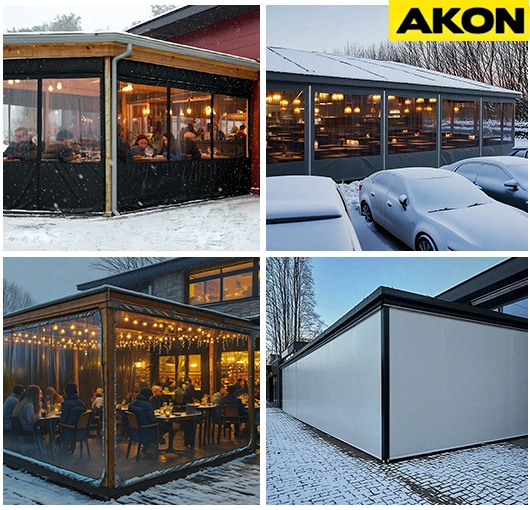
Most patio enclosures make you choose between weather protection and flexibility. Vinyl systems give you both. Each panel works independently and rolls up when you don't need it. That means you stay adaptable year-round instead of being stuck with one fixed setup.
Clear vinyl keeps the outdoor dining experience intact while protecting your customers. The space stays bright with natural light flowing through, diners can still see outside, and it doesn't feel cramped or enclosed. At the same time, you're blocking wind, rain, and snow that would normally shut you down. Customers stay comfortable without losing what they love about patio dining.
These systems are built for restaurants. Heavy-duty vinyl with reinforced edges and commercial-grade grommets stands up to daily use and constant adjustments. You get solid protection without paying for expensive installation or locking yourself into a permanent structure like glass. Your servers can operate them easily, and they handle everything that comes with running a busy restaurant.
Easy Install
Outdoor curtains come with grommets at the top making hanging the curtains quick and easy with or without the curtain track.
Inexpensive
Outdoor curtains are about 1/3rd of the cost of other separation methods such as rigid walls or panel systems and are easy to store.
Temperature Control
Keep consistent temperatures inside more consistent for a more comfortable work environment and pull open when not needed.
Wind Blocking
Keep the wind and rain out when the weather turns nasty but still have the ability to pull open the curtain when its nice or you need access.
Material Options
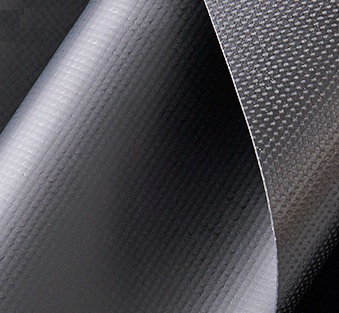
Opaque Vinyl
Industrial grade 18oz opaque vinyl ideal for moderate temperature control and blocking line of sight. $$
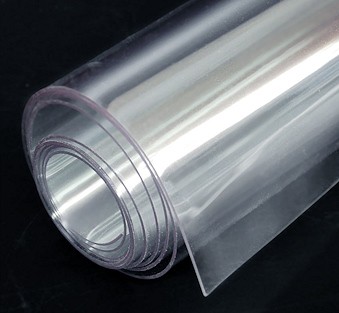
Clear Vinyl
Industrial grade 30mil clear vinyl ideal for moderate temperature control and allowing a line of sight. $$
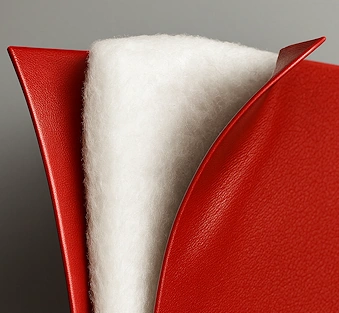
Insulated Vinyl
Industrial R3 1/2" thick material with 18oz vinyl skins ideal for heavy temperature control and blocking the line of sight. $$
Frequently Asked Questions
Keeping your patio open through winter is a smart move that protects your revenue, but you probably have questions about what it costs, how it works, and whether it's really worth it. We put together answers to the questions restaurant owners ask us most often. Keep reading to understand how these systems work, what they'll cost you, and why they're one of the best investments you can make for year-round service.
Restaurant Patio Vinyl Enclosure FAQs
What is a vinyl enclosure for restaurant patios?
A vinyl enclosure uses clear or insulated PVC panels mounted to the patio perimeter with tracks, grommets, or zippers. It blocks wind, rain, and drifting snow while maintaining service flow and visibility. Panels can roll up or be removed seasonally, creating a flexible, weather-ready dining space.
What’s the difference between clear vinyl and insulated vinyl?
Clear vinyl is transparent and ideal for preserving views and natural light while stopping wind and precipitation. Insulated vinyl adds a foam core and sealed seams to reduce heat loss and drafts, improving guest comfort in winter. Many operators combine insulated walls with clear “vision” windows.
How thick should clear vinyl be for cold-weather patios?
For winter use, 30–40 mil clear vinyl offers better stiffness, clarity, and wind resistance than lighter gauges. Thicker panels billow less and stay flatter in cold temperatures. Confirm the gauge is compatible with your track, zipper, or grommet spacing to ensure smooth operation and longevity.
Will a vinyl enclosure actually keep guests warm?
Yes—by stopping wind and drafts, vinyl enclosures significantly improve perceived temperature. For true winter comfort, pair the enclosure with outdoor-rated heaters. Insulated vinyl reduces heat loss further, helping maintain stable temperatures and lowering heater runtime compared to single-layer clear panels.
Are vinyl enclosures safe to use with heaters?
Yes, with precautions. Use outdoor-rated electric or infrared heaters, follow clearance distances from vinyl and wood, and plug into GFCI-protected circuits. Provide ventilation to manage condensation and air quality, avoid open flames near curtains, and never leave heaters unattended during service hours.
How are vinyl panels installed on a restaurant patio?
Most systems mount to sturdy overhead framing or side posts using aluminum tracks, snap-on clips, or grommets with fasteners. Plan for doorways, server pass-throughs, and bottom hold-downs. Professional installation is recommended for complex footprints or when an airtight fit is important.
Do I need permits or HOA/landlord approval?
Often, fabric vinyl curtains are considered temporary weather protection, but rules vary. Check local codes, fire regulations, and landlord or HOA requirements before ordering. Getting approvals early helps avoid delays, ensures compliance, and prevents rework after installation.
Can vinyl enclosures handle strong winds and snow?
Quality systems withstand typical winter conditions when properly anchored. Choose reinforced hems, continuous tracks, frequent fasteners, and bottom ties or keder edges. Keep panels taut to reduce billowing. In severe storms, rolling up windward panels can reduce stress on the hardware and structure.
How do I control condensation and maintain clear visibility?
Ventilate the space and keep surfaces dry. Crack a panel during service lulls, add discreet vents, and consider a small dehumidifier in damp climates. Clean vinyl with mild soap and water, rinse well, and dry. Avoid ammonia or abrasive cleaners to preserve clarity and flexibility.
What’s typical lead time and cost for a vinyl enclosure?
Lead times vary by season, commonly 2–5 weeks for custom panels and hardware. Costs range from budget-friendly for simple clear panels to higher for insulated systems with doors and windows. Size, panel count, and hardware choices (tracks, zippers, clear windows) drive final price.
Can I brand the vinyl with my logo or graphics?
Yes. Many suppliers offer logo printing or applied graphics on opaque or translucent vinyl areas. For clear vision zones, place branding on adjacent opaque borders or removable banners. Confirm ink compatibility and cleaning guidelines so artwork remains crisp through winter wear.
How do guests and staff enter and exit easily?
Plan doorways with zippered panels, magnetic closures, or framed roll-up sections at host stands and server routes. Keep ADA clearance in mind and ensure thresholds are smooth. Clearly mark exits and maintain pathways free of cords, heaters, and hold-down straps for safe movement.
What maintenance does a vinyl enclosure need?
Rinse away salt and grime, wash gently with mild soap, and dry fully. Inspect stitching, clear windows, and hardware for wear. Lubricate zippers and track components as recommended. In spring, roll panels on a core and store in labeled bags in a cool, dry place.
Are vinyl enclosures removable and reusable each season?
Yes. Panels are designed to roll up during shoulder seasons or be removed entirely for storage. Reusable tracks, fasteners, and labeled panel sets speed reinstallation. Proper storage—clean, dry, rolled on a core—extends clarity, flexibility, and seam life year over year.
Will a vinyl enclosure affect fire egress or sprinklers?
It can if not planned. Keep exits unobstructed, maintain required aisle widths, and avoid blocking sprinkler spray patterns. Use flame-retardant-rated vinyl where required and coordinate with your local fire authority or landlord to ensure the enclosure meets egress and safety standards.
Which hardware is best: tracks, zippers, or grommets?
Tracks provide the cleanest seal and smoothest operation for busy patios. Zippers allow quick access and modular doorways. Grommets with fasteners are economical and durable for simple openings. Many restaurants combine tracks for primary walls with zippers at service doors.
How do I measure correctly for custom panels?
Measure width and height for each opening to the nearest 1/8 inch, note obstructions (railings, planters), and record mounting surfaces. Mark door locations, bottom hold-down preferences, and desired clear “vision” zones on your sketch. Photos with labels help ensure precise fabrication and fit.
Summary
Too many restaurant owners watch their patios sit empty for months thinking there's nothing they can do about it. That's not true, and it's costing you money. With the right protection system, your patio can generate revenue in January just like it does in July.
When you add up what you're actually losing, the picture gets clear fast. Empty tables that could be turning. Furniture taking a beating from weather and needing replacement.
Customers choosing competitors who offer winter outdoor dining. Good patio protection pays for itself through both increased revenue and reduced maintenance costs. You get months of productive service instead of staring at empty space.
Start Serving Outdoors This Winter
Whatever your restaurant needs and whatever your budget looks like, there's a solution that works. Get started today with a protection system built specifically for your patio's size and how you operate.

